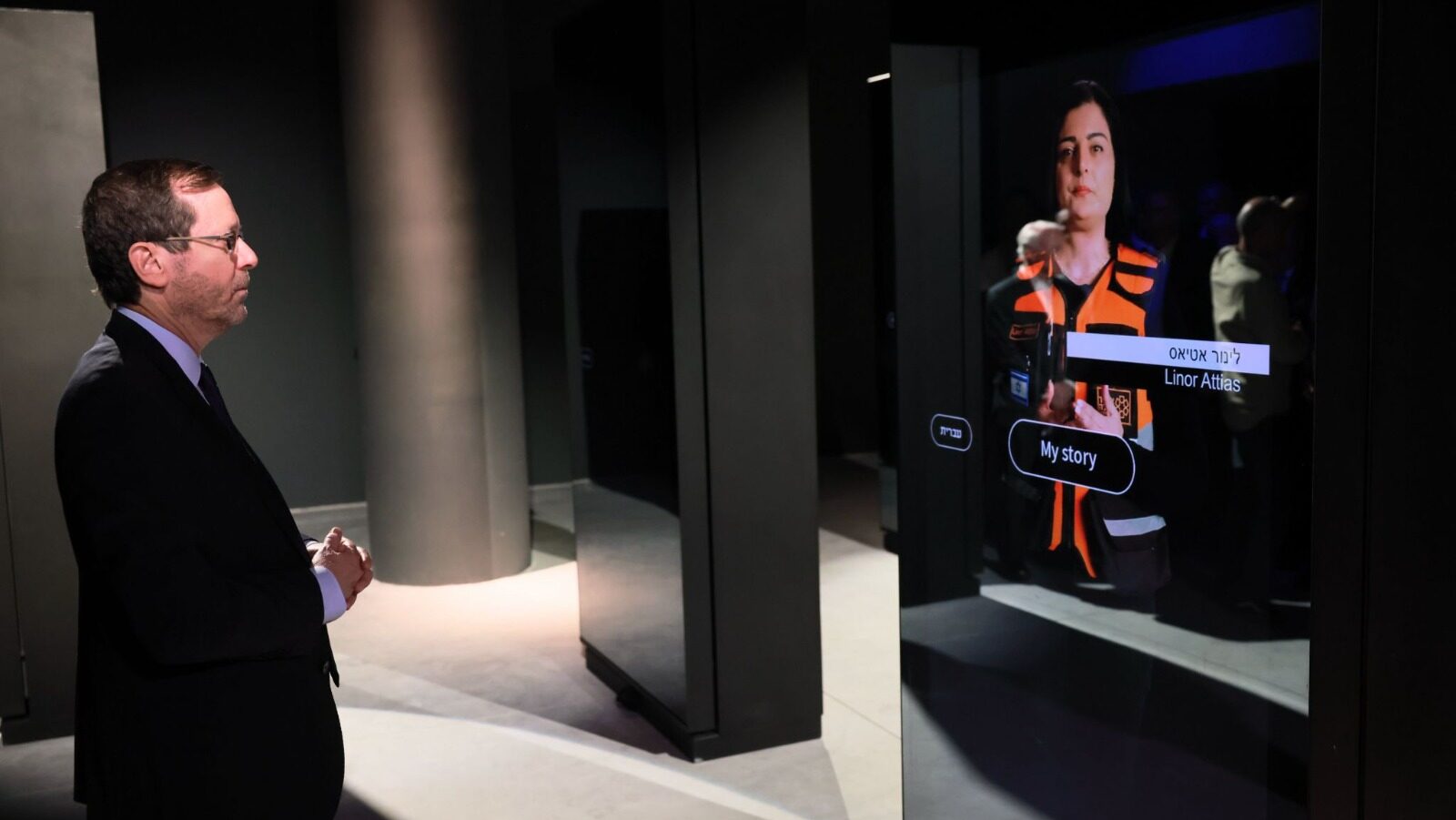Museum of Tolerance Opens ‘06:29 From Darkness to Light’ Exhibition With Message of Resilience
Survivors, first responders, and family members of hostages taken on Oct. 7 weigh in on their memories of the attacks and how to show the world what happened on that day
In a solemn ceremony, the Museum of Tolerance in Jerusalem unveiled the exhibition “06:29 From Darkness to Light,” offering a first-person, unfiltered glimpse into the horrors endured by victims of the Oct. 7 Hamas terror attacks. Israeli President Isaac Herzog attended the opening along with survivors, first responders, family members of hostages and victims, and international dignitaries.
As visitors enter the immersive experience, they are transported back to that fateful day. Mobile shelters, similar to those where many victims tried to hide, reverberate with sirens and communication devices, encapsulating the feeling of being trapped in the crosshairs of Hamas.
Central to the exhibition are the testimonies of 25 women, each bearing witness to their experiences on Oct. 7. From Shelly Shem Tov, who witnessed her son being kidnapped into Gaza over the phone, to Linor Attias, a United Hatzalah medic who was one of the first responders in southern Israel, the exhibit offers a visceral understanding of what happened on that tragic day.
“After October 7, the team behind the Museum of Tolerance in Jerusalem realized we needed to address both the darkness and the light because they occurred simultaneously in Israeli society,” Jonathan (Yoni) Riss, director of operations at the Museum of Tolerance, told The Media Line.
“While we had the atrocities of that day, many people stepped forward and committed to our mutual responsibility to each other. Not just Jews, but people from all religions, from all backgrounds, from Israel and abroad. We plan to take this exhibition to Dubai, Europe, and North America,” he added.
The Museum of Tolerance, a relatively new attraction in Jerusalem, was inaugurated during one of the most divisive moments in Israel’s history, but the events of Oct. 7 showed the need for the Israeli public to unite.
“Until October 6, the country was very polarized between those against and those in favor of the government’s plans for judicial reforms, but the attacks on the 7th created a new situation that required unity,” noted Riss. “That is the light we’re talking about. The Museum of Tolerance invests in this unity as a catalyst to empower people to change the world.”
This exhibition is the first place that visually explains what happened on that day from a personal point of view, from the beginning until the end
According to Riss, the events of Oct. 7 are still being documented, and not all information is readily available to the public. “This exhibition is the first place that visually explains what happened on that day from a personal point of view, from the beginning until the end. Most of the content related to Oct. 7 that large audiences saw is meant to be shocking, limiting how many people feel interested in seeing it and talking about it. So, we have a vast majority of the public that never had access to the full context of what happened that day, making these individuals potentially doubtful that such extreme horrors of that day ever happened,” Riss shared.
“Educating, promoting dialogue, and encouraging mutual responsibility is essential to the Museum of Tolerance. You can expect courses to instill these values and promote social change. We’re building a school of civic discourse, not just a museum; this exhibition is a step in that direction. This school is meant to be a dialogue between all groups, not a debate between Jews and other groups,” Riss explained.
We’re building a school of civic discourse, not just a museum; this exhibition is a step in that direction
Give the gift of hope
We practice what we preach:
accurate, fearless journalism. But we can't do it alone.
- On the ground in Gaza, Syria, Israel, Egypt, Pakistan, and more
- Our program trained more than 100 journalists
- Calling out fake news and reporting real facts
- On the ground in Gaza, Syria, Israel, Egypt, Pakistan, and more
- Our program trained more than 100 journalists
- Calling out fake news and reporting real facts
DONATEJoin us.
Support The Media Line. Save democracy.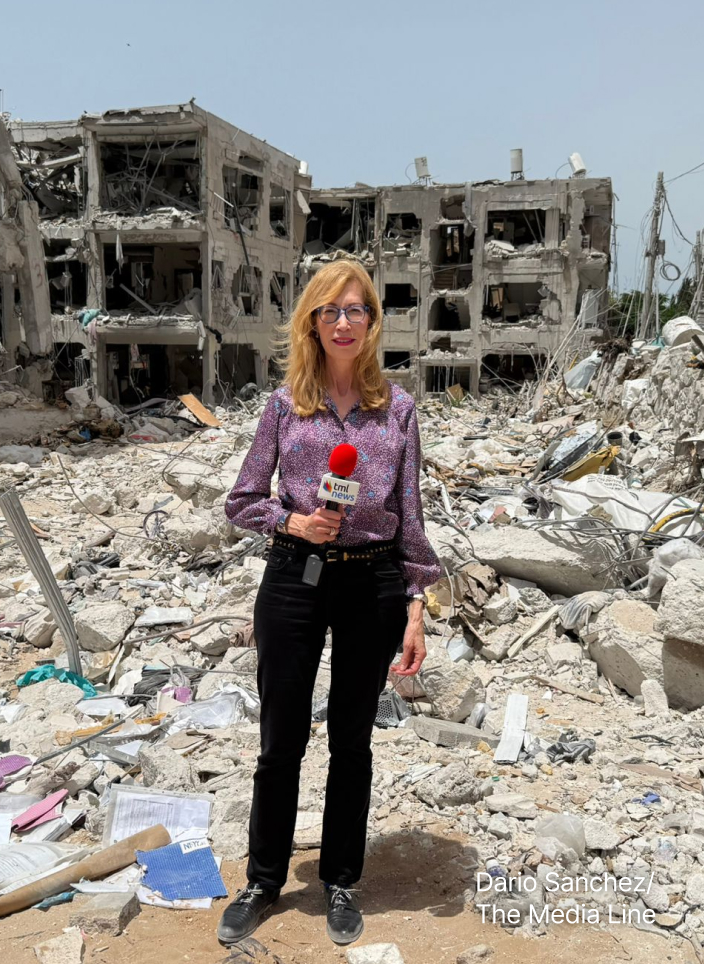
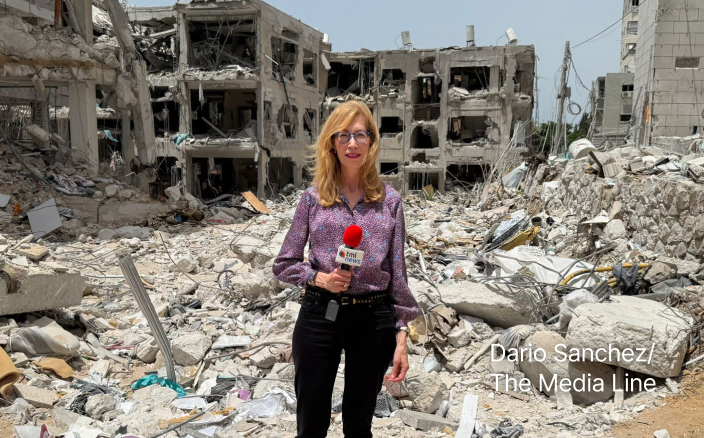
The exhibition’s unique content from Oct. 7 was curated by Malki Shem Tov, the father of Omer Shem Tov, one of the hostages taken by Hamas that day. “Until now, what people heard and saw about October 7 was always from secondhand sources. This exhibition gives you a firsthand experience of what happened that day and allows visitors to glimpse what victims felt,” Shem Tov told The Media Line.
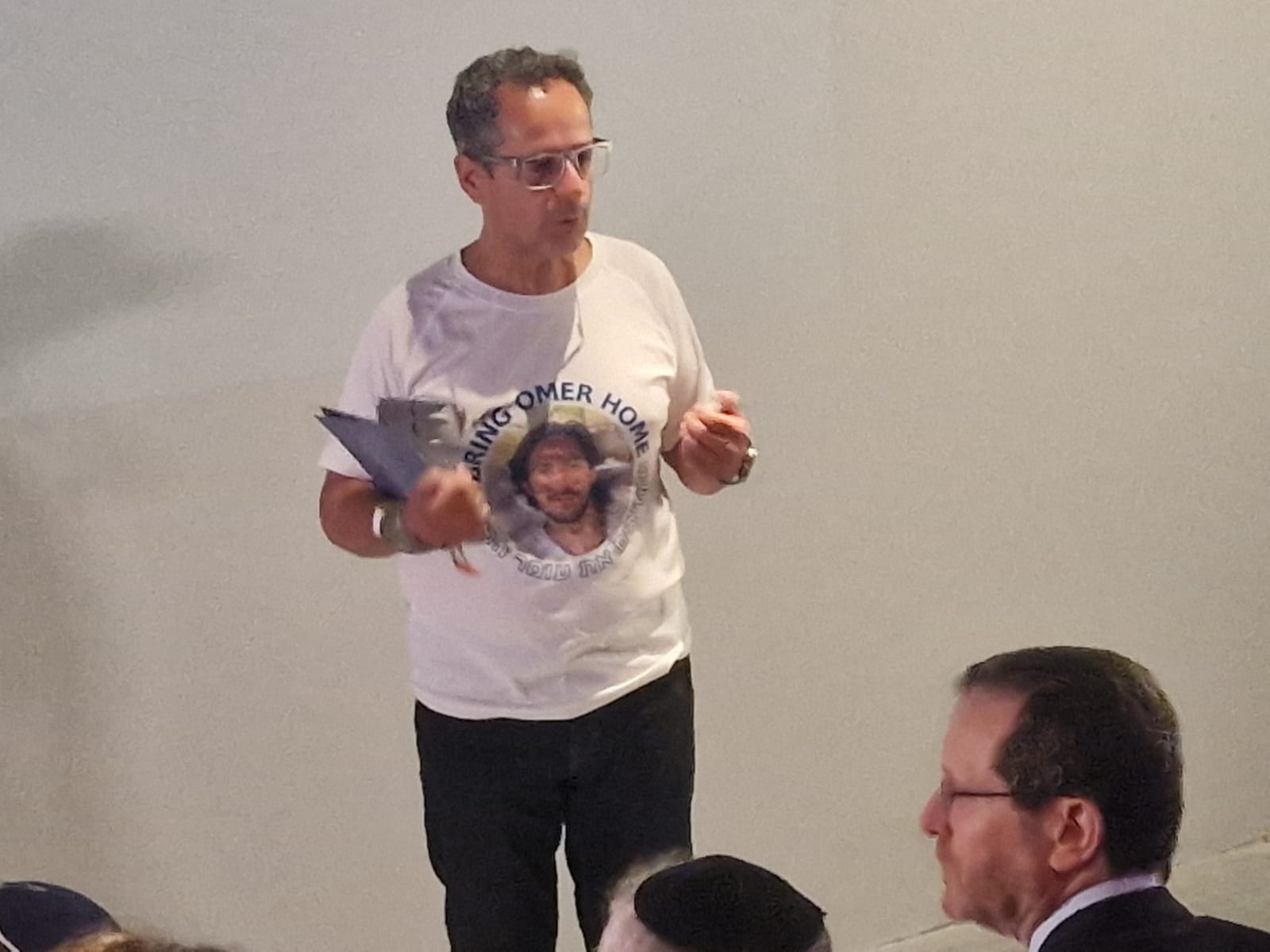
Exhibit curator Malki Shem Tov and Israeli President Isaac Herzog at the exhibit “From Darkness to Light,” at the Museum of Tolerance in Jerusalem. (Nathan Klabin/The Media Line)
“We decided to make it look like the person giving the testimony is truly in front of you. When you enter the ‘migunit’ [portable mini-bunker], identical to the migunit used by dozens of victims seeking refuge, you get to feel a drop of how it was to be there on October 7,” he said.
As exhibition curator and father of a hostage, Shem Tov hopes this message of all that transpired on that horrific day will be seen around the world and will help educate large audiences about the complexity of conflicts in the Middle East. He also hopes the exhibition will change as many minds as possible to combat the current rise in antisemitism.
“Part of our plans is to move this exhibition around the world, not just to countries that are traditional allies of Israel. We need this to be seen in the US, Europe, and the Middle East. We must deliver the message of what happened on October 7 and what is happening with the hostages in Gaza now.”
Contemplating the recent increase in antisemitism disguised as criticism of Israel since Oct. 7, Shem Tov doesn’t believe that anyone doubts that the Hamas attacks actually happened.
“Those who deny it do it for political reasons, but they know it happened. Then we have a portion of the general population that still hasn’t seen or heard firsthand information about what happened and follows those who deny October 7 for political reasons. The paradox is that people still doubt it, even though no terror attack in world history has ever been so self-documented with so many videos and photos like Hamas did on October 7.”
No terror attack in world history has ever been so self-documented with so many videos and photos like Hamas did on October 7
For Shem Tov, the choice to create an exhibition that evokes profound feelings was intentional. “My creative process considers that we’re always being bombarded with data. Ultimately, our brains can’t accept all the data they are being fed. When you deliver a message with a strong experience, it affects you regardless. Hearing the same evidence over and over from a screen doesn’t change minds, but this exhibition is meant to break this barrier with a unique experience,” he said.
One of the individuals featured in the exhibition is Linor Attias, the director of communications for United Hatzalah in Israel and one of the first medics to arrive in the southern Israeli communities that were attacked on October 7.
“I’m still living on October 7. It’s still part of my life. Every morning and night, but especially during the night. Whoever has been there and seen the barbarism of these terror attacks that slaughtered us, the victims and the witnesses, we’ll never forget. It’s part of who I became after that day,” Attias told The Media Line.
“Seeing my video in this exhibition, saying how hard and terrifying those moments were, when I feared for Israel’s survival as a nation, gave me the certainty that I’m not alone. I feel responsible for protecting my nation and sharing the story of what happened,” she said. “No one can deny it. We need to find a bridge to resolve this conflict, but this can only happen if everyone is committed to never letting this happen again. We need to be the change that resolves conflicts and avoids such destruction. Conflicts happen, but the dehumanizing brutality of October 7 can’t ever be allowed to be committed against anyone,” Attias added.
Shelly Shem Tov, the wife of exhibition curator Malki Shem Tov, described to The Media Line why it’s important to share her experiences of Oct. 7, including being a mother of a hostage. “It’s been 215 days since October 7, and I still feel like I’m in a nightmare waiting to wake up. As you’ve heard about the horrible things that happened that day, you cannot imagine a world with good people where someone plans to go to a music festival, invade regular people’s houses, and murder everyone. How can it be?”
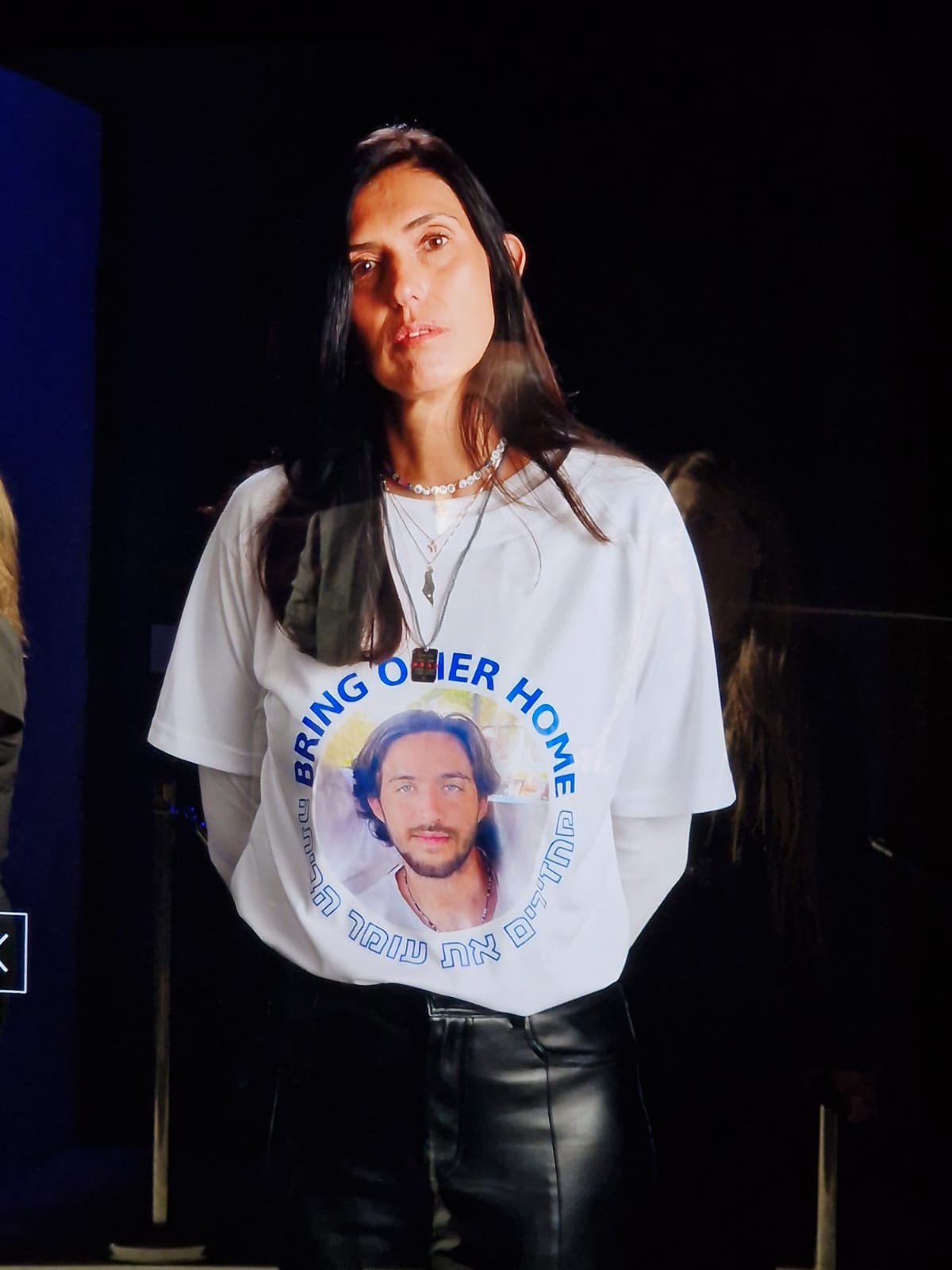
Shelly Shem Tov at the exhibit “From Darkness to Light,” at the Museum of Tolerance in Jerusalem. (Nathan Klabin/The Media Line)
She believes that “everyone must see and hear what is shown in this exhibition. This message can open minds to new facts about that day. People who deny that there was an attack or that the attack was not so devastating can see our eyes, feel our sorrow, and hear our stories. This could be in a movie, but it isn’t! It has been seven months of our lives in this craziness,” she added.
As a grieving mother, Shem Tov’s testimony can reach people who don’t believe or understand the gravity of what happened that day. “If you don’t say ‘No’ to terror, this same terror will grow, and it will come after you. I’m not a diplomat or a politician. I’m the mother of a son who went to a festival to live happily and be free and got kidnapped by a terrorist organization. To the people who deny this happened, I ask: ‘What if it had been your son or daughter? What would you do if this happened to someone you love?’”
Hearing Shem Tov’s voice and pain in the exhibition makes the experience incredibly intense. “I want my son back home. Every day, I’m afraid of opening my eyes. I’m afraid of what the day will bring. I think of my son, who hasn’t seen daylight for over seven months. I eat something and can only think of him, that he might be hungry and thirsty. Every day, when I reach for my asthma medicine, I remember that he also has asthma and probably doesn’t have medicine, in a tunnel with no air,” she shared with The Media Line.
“Where is the Red Cross? Where are the human rights groups? We want peace. We love life. We want it for everybody. Why don’t others want it for us?” she asked.
